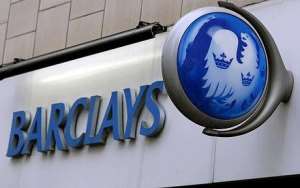
The Bank of Ghana, at its July MPC meeting, kept its policy rate unchanged at 17.00%. This was in line with our expectations and comes as the committee, despite being upbeat on the inflation outlook, noted that it would need continued fiscal consolidation and tight monetary policy to ensure that inflation remains within the target band.
We believe that room for further easing could still open up towards year-end, particularly if the cedi regains some of its recent losses and inflation resumes its downtrend, dipping back into single digits.
The MPC of the Bank of Ghana kept its policy rate unchanged at 17.00%. This was in line with our expectations as we anticipated a more cautious stance on the back of the weaker currency and recent higher inflation prints, taking inflation back into double-digits (10% y/y in June). The committee was of view, as we are, that the uptick in inflation since May is only temporary and that the downtrend will resume in coming months. However, while the committee does not believe the second round effects of recent fuel price hikes pose a significant risk, it noted that, in order “to keep inflation within the target band”, it would require continued fiscal consolidation combined with tight monetary policy.

Private sector credit extension recovering
Upbeat on growth expectations though private sector credit growth remains below expectations. Economic developments highlighted by the MPC include the Bank’s Composite Index of Economic Activity (CIEA), which recorded growth of 3.2% y/y in May 2018, versus 2.6% in May 2017. Credit to the private sector continues to improve steadily, with growth rising to 5.7% y/y in June from 0.8% in February. The Ghana Reference Rate has declined from 16.74% in May to 16.19% in June. Meanwhile, business and consumers confidence levels have eased somewhat, while non-performing loans to total loans remain high even as the percentage edged lower to 22.6% in June from 23.4% in April.
External balances, despite benefitting from higher oil revenues, are also reflecting the pressure of lower gold and cocoa revenues, with the cumulative trade surplus at USD1.1bn in June compared with USD1.13bn in June 2017. On the fiscal side, the Bank reported that the fiscal deficit in the first five months of the year was weaker than the initial target. However, total public debt is estimated at 63.8% of GDP at the end of May 2018, below the 69.1% recorded at end-2017.

Further policy easing possible should inflation return to single digits
The cautious policy stance is expected to continue in the remainder of the year, though there could be scope for further easing in Q4. We expect headline inflation to ease to around 9.0% y/y by year-end, in line with the finance ministry’s projection of 8.9%. There are significant upside risks, including global energy prices, domestic weather conditions that could impact further on food prices, fiscal risks and US monetary and trade policies that may pressure the exchange rate.
However, we expect the cedi to show greater resilience into year-end, and perhaps strengthen to between 4.60-4.70/USD given several support pillars, including the USD1.3bn Cocobod loan, strong level of gross reserves of 3.9 months of imports and higher oil revenues. While the MPC is likely to maintain its cautious stance for as long as needed, we believe that room for at least another 100bp cut is possible by year-end, should global risks ease, the currency regain some of its losses and inflation return to single digits.




 Former Kotoko Player George Asare elected SRC President at PUG Law Faculty
Former Kotoko Player George Asare elected SRC President at PUG Law Faculty
 2024 elections: Consider ‘dumsor’ when casting your votes; NPP deserves less — P...
2024 elections: Consider ‘dumsor’ when casting your votes; NPP deserves less — P...
 You have no grounds to call Mahama incompetent; you’ve failed — Prof. Marfo blas...
You have no grounds to call Mahama incompetent; you’ve failed — Prof. Marfo blas...
 2024 elections: NPP creates better policies for people like us; we’ll vote for B...
2024 elections: NPP creates better policies for people like us; we’ll vote for B...
 Don’t exchange your life for wealth; a sparkle of fire can be your end — Gender ...
Don’t exchange your life for wealth; a sparkle of fire can be your end — Gender ...
 Ghana’s newly installed Poland train reportedly involved in accident while on a ...
Ghana’s newly installed Poland train reportedly involved in accident while on a ...
 Chieftaincy disputes: Government imposes 4pm to 7am curfew on Sampa township
Chieftaincy disputes: Government imposes 4pm to 7am curfew on Sampa township
 Franklin Cudjoe fumes at unaccountable wasteful executive living large at the ex...
Franklin Cudjoe fumes at unaccountable wasteful executive living large at the ex...
 I'll 'stoop too low' for votes; I'm never moved by your propaganda — Oquaye Jnr ...
I'll 'stoop too low' for votes; I'm never moved by your propaganda — Oquaye Jnr ...
 Kumasi Thermal Plant commissioning: I pray God opens the eyes of leaders who don...
Kumasi Thermal Plant commissioning: I pray God opens the eyes of leaders who don...
